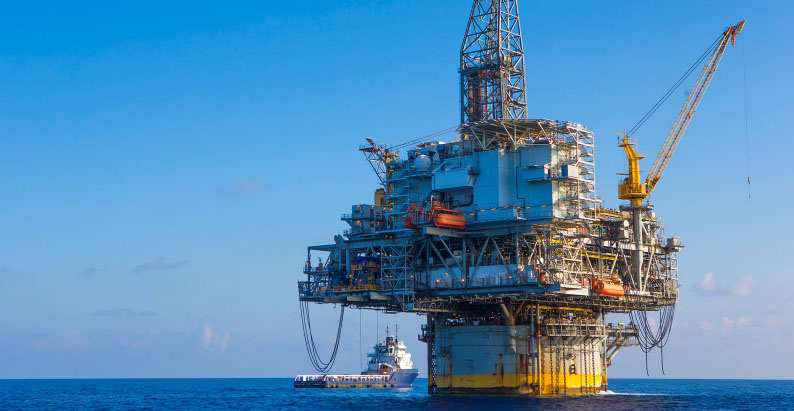(Bloomberg) — Mad Dog, BP Plc’s drilling project deep in the Gulf of Mexico, could be Exhibit A in the oil industry’s war on cost.
When the British oil giant announced the project’s second phase in 2011, it put the price at $20 billion. Last month, after simplifying plans and benefiting from a sharp drop in everything from steel to drilling services, Chief Executive Officer Bob Dudley said he could do the job for $9 billion.
Across the industry, companies have taken a chainsaw to expenses, slashing spending for the 2015-to-2020 period by $1 trillion through cutting staff, delaying projects, changing drilling techniques and squeezing outside contractors, according to consulting firm Wood Mackenzie Ltd. That’s cushioned businesses as oil prices plunged 60% since 2014. Now producers seek to show they can make the savings stick, while service providers try to reverse their losses.
Industry costs “may be the defining issue of the next six to 12 months," said J. David Anderson, a Barclays analyst in New York. “As you start ramping up, the fact is you’re going to need more services and they’re going to have to come in at a higher price."
London-based BP expects 75% of its reductions to hold even if oil rebounds, Dudley told investors in July. In earnings reports over the past month, U.S. shale drillers said at least half of their savings are permanent improvements in efficiency. But service providers such as Schlumberger Ltd. and Halliburton Co., which perform much of the drilling and hydraulic fracturing around the globe, tell a different tale: They may have cut rates to keep business during the oil rout, but those discounts were temporary.
“Price negotiations have been a barroom brawl," Jeff Miller, president of Houston-based Halliburton, said on a July 20 conference call. “But we believe prices will recover."
Who’s right could have big implications for the oil industry and the broader economy.
U.S. benchmark oil has climbed almost 20% since closing below $40 a barrel and slipping into a bear market earlier this month. The grade traded at $47.23 as of 9:15 a.m. New York time on Thursday.
“A lot of the actions that we’ve taken are what we would call self-help type of things, changing the way we work,” said Stephen Riney, chief financial officer of Houston-based Apache Corp., an oil explorer. “These are things that are not dependent upon the pricing from third parties.”
While the industry has gotten more efficient, it’s likely to give back most of the gains, said Pritesh Patel, upstream director at research firm IHS Markit Ltd. About half the decline came as a strong U.S. dollar reduced the relative price of materials and labor, Patel said. Contractor discounts accounted for much of the rest, he said.
Sustaining Cuts
Producers will be lucky to sustain a third of the cost reductions, Patel predicted.
One example of a cut that may soon be lost is in the Eagle Ford Shale in south Texas, where the price to lease a drilling rig with a crew tumbled by almost a quarter in the two-year downturn to $18,208 a day, according to a Bloomberg Intelligence estimate.
Service providers say they’re getting to a point where they may no longer be able to offer such a discount. Schlumberger, Halliburton and Baker Hughes Inc., the top service companies, all reported losses in North America in the first three months of 2016.
“A large wave of cost inflation from every part of the supplier industry is now building," Schlumberger CEO Paal Kibsgaard said on a July 22 call. Profit margins, he said, are “deeply negative."
Permanent Changes
Oil explorers insist they’ve made lasting changes. In the North Sea, producers such as BP are standardizing everything from drilling equipment to the light bulbs and paint used on offshore rigs. In the U.S., companies have built out infrastructure in shale plays, installing pipelines to transport crude and wastewater rather than paying to truck it away.
In the Permian Basin in west Texas, Devon Energy Corp. has extended electricity to its well sites, allowing it to eliminate 300 rented generators, Chief Operating Officer Tony Vaughn said on an Aug. 3 call. Occidental Petroleum Corp. CEO Vicki Hollub said her company has improved well designs and can drill more quickly, accounting for about 80% of cost reductions.
Apache has renegotiated power, water and chemical-handling contracts and cut lease-operating expenses, a measure of drilling efficiency, by 17%, CEO John Christmann told analysts on Aug. 4.
Producers such as Apache and Devon are going to have to accept “the reality” of the service companies’ situation, Halliburton CEO Dave Lesar said last month.
“Some of the efficiency gains we have made with customers are in fact sustainable and will continue, but others including deep uneconomic pricing cuts are unsustainable and will have to be reversed,” he said.
Bloomberg News by Alex Nussbaum, David Wethe and Javier Blas



.JPG.small.400x400.jpg)

